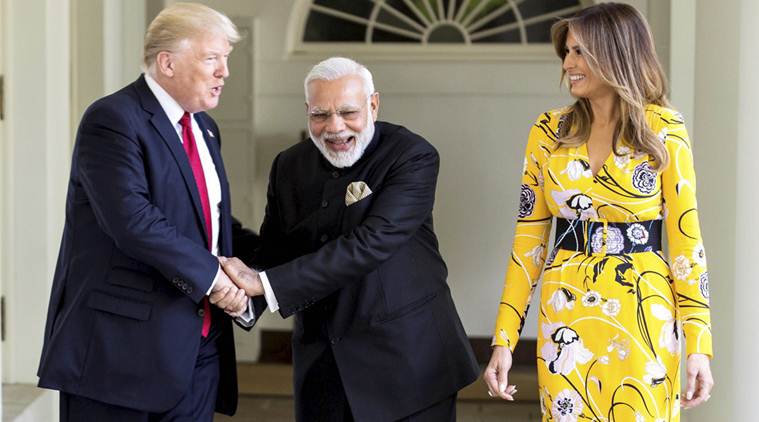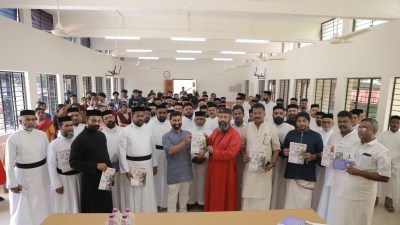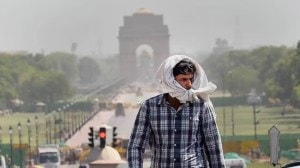- India
- International
Donald Trump’s visit will push move to set up six nuclear reactors
The emergence of a viable proposal would set the stage for a commercial agreement to be initialled with Westinghouse Electric, which would pave the way for commencement of work on the project in coastal Andhra Pradesh.
 The nuclear power push comes amid the government’s plans to triple the country’s nuclear capacity by 2024 to lower the contribution of fossil fuels in India’s energy mix, alongside a pronounced renewable energy push.
The nuclear power push comes amid the government’s plans to triple the country’s nuclear capacity by 2024 to lower the contribution of fossil fuels in India’s energy mix, alongside a pronounced renewable energy push.
An announcement on a “project proposal” for the setting up of six nuclear power reactors in collaboration with Westinghouse Electric Company is expected during US President Donald Trump’s visit this week.
The emergence of a viable proposal would set the stage for a commercial agreement to be initialled with Westinghouse Electric, which would pave the way for commencement of work on the project in coastal Andhra Pradesh.
EXPLAINED | India-US ties, over the years
Pittsburgh-based Westinghouse Electric employs over 10,000 people globally and is a flagbearer of the US nuclear sector, alongside the GE-Hitachi combine.
Officials indicated that “techno-commercial discussion to arrive at a project proposal…have made steady progress” and a fresh pact, which builds on the civil nuclear cooperation agreement signed by India and the US in March 2019, is expected to be inked during the visit.

The project is planned to be set up at Kovvada on the eastern Andhra coast, about 260 km from Vishakhapatnam, and will comprise six AP-1000 reactor units of 1208 MWe (mega watt electric) capacity each. The cost and schedule will emerge upon finalisation of the proposal and the administrative approval and financial sanction by the government.
The announcement comes amid indications that the Department of Atomic Energy is working on a report, in consultation with the Atomic Energy Commission, for amending the Consolidated FDI Policy, according to which atomic energy currently figures in the list of prohibited sectors.
READ | On the table: plan to counter China’s reach with Blue Dot network
The DAE Chairman and the Department’s communications team did not respond to a set of detailed queries on this issue sent by The Indian Express.
In May 2017, the Union Cabinet had accorded an “in principle” approval for establishing the six AP 1000 reactors with WEC. “The discussions to arrive at project proposals to set up nuclear power projects with foreign cooperation involve complex technical, commercial, legal, regulatory and other issues, which take time for conclusion. The project proposal will put the nuclear project in execution mode,” an official said.
Follow Donald Trump India Visit LIVE Updates here
WEC’s AP-1000 reactors are types of Light Water Reactors, like the ones being set up in collaboration with Russia in Tamil Nadu’s Kudankulam, where water is used both as coolant and moderator. The initial agreement to build the WEC reactors, signed in 2016, followed on from the Indo-US civil nuclear agreement signed in 2008.
WEC, alongside Wilmington-based GE Hitachi Nuclear, has been negotiating to build reactors in India since the nuclear deal was inked. The project, however, came under a cloud after WEC filed for bankruptcy in mid-2017 following cost overruns on reactors coming up in the US.
The discussions between the two countries to enable the sale of US atomic reactors have also been impacted as India’s nuclear liability rules, which apportion a part of the costs of any accident to be channeled to the manufacturer of the reactor alongside the operator of the station, had been cited as a hurdle by US companies.
After it filed for bankruptcy, Canada’s Brookfield Asset Management bought WEC from Japan’s Toshiba in August 2018. Government officials indicated that price negotiations had resumed late 2018 after WEC re-emerged from bankruptcy.
In a bid to tide over the issue of high project costs — the biggest hurdle for US reactors — the Indian side focused on bringing down the interest burden to ensure that the price of the AP-1000 series of reactors matches with the two new ‘VVER’ series reactor units being set up by the Russians at Kudankulam (Units 3 and 4).
Since WEC, earlier owned by Toshiba, has traditionally sourced much of the equipment from Japan, the Indian side managed to get the US company to commit to continue sourcing components from Japan to get access to cheaper credit, thereby bringing down project costs and making the tariff competitive, officials indicated.
The nuclear power push comes amid the government’s plans to triple the country’s nuclear capacity by 2024 to lower the contribution of fossil fuels in India’s energy mix, alongside a pronounced renewable energy push.
The finalisation of a pact with WEC also marks a full circle for India’s nuclear reactor technology, given that Westinghouse’s new owner is a Canadian firm. Canada played a key role in India’s nuclear evolution, having supplied the Indian reactor CIRUS in 1954, well before the exports of nuclear hardware and uranium were stopped after India carried out a peaceful nuclear test in 1974.
Apr 26: Latest News
- 01
- 02
- 03
- 04
- 05








































